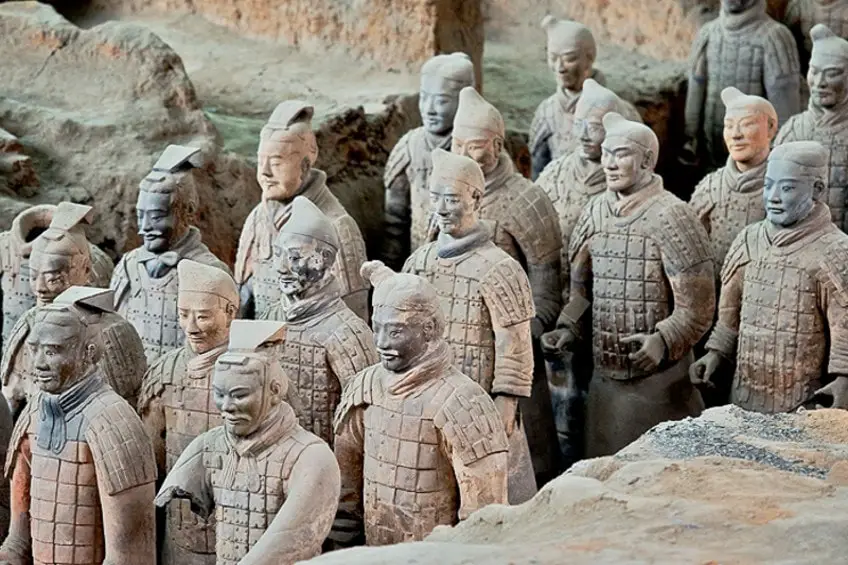Dive into the Stories Behind Intriguing Historical Artifacts

Introduction
Embarking on a journey through time, we unravel the tales concealed within some of history’s most captivating artifacts. Each item, an echo of bygone eras, holds within its worn edges and faded hues the stories of triumphs, mysteries, and the ebb and flow of human existence.
1. The Rosetta Stone: Unraveling Ancient Scripts
1.1 Discovery Amidst Conflict
The year was 1799, and in the midst of Napoleon’s military campaigns in Egypt, a group of French soldiers uncovered a slab of black basalt. Little did they know that this unassuming stone would become a linchpin for unraveling the mysteries of ancient Egypt.
1.2 The Triumvirate of Scripts
The Rosetta Stone is inscribed with the same text in three different scripts—Greek, Demotic, and hieroglyphics. This triumvirate became the Rosetta Stone’s hallmark, providing a Rosetta Stone itself for unlocking the language of the pharaohs.
1.3 Champollion’s Triumph
Enter Jean-François Champollion, a French scholar obsessed with cracking the hieroglyphic code. Through meticulous study and comparison, he deciphered the ancient script using the Greek text as a key. The Rosetta Stone, once a silent relic, now spoke volumes about the rich tapestry of ancient Egyptian civilization.
2. The Terracotta Army: Silent Guardians of an Empire
2.1 A Startling Discovery
In 1974, farmers digging a well near Xi’an, China, unearthed a sight that would rewrite history—the Terracotta Army. Thousands of life-sized clay soldiers stood in formation, a testament to the grandeur of China’s first emperor, Qin Shi Huang.
2.2 Qin Shi Huang’s Afterlife Army
Intended to accompany Qin Shi Huang in the afterlife, the Terracotta Army represented a formidable force, each soldier meticulously crafted with unique facial features, uniforms, and weaponry. The level of detail reflected the emperor’s desire for an eternal army to safeguard him beyond the realms of mortality.
2.3 Ongoing Archaeological Marvel
The ongoing excavation of the Terracotta Army continues to yield new discoveries, from rare artifacts to insights into ancient Chinese manufacturing techniques. This army, buried for over two millennia, breathes life into the history of Qin’s dynasty.
3. The Dead Sea Scrolls: Echoes from the Desert Caves
3.1 A Serendipitous Discovery
In the mid-20th century, a Bedouin shepherd stumbled upon a collection of ancient scrolls hidden in the caves of Qumran, near the Dead Sea. These scrolls, dating back to the Second Temple period, became known as the Dead Sea Scrolls.
3.2 Scriptural Insights
The Dead Sea Scrolls contain fragments of every book in the Hebrew Bible, shedding light on the religious and cultural practices of the Essene community that inhabited Qumran. The scrolls remain invaluable for understanding the development of biblical texts.
3.3 The Mystery of the Essenes
While the scrolls provide profound insights into ancient Jewish life, the identity of the Essenes and the purpose behind hiding the scrolls in the caves remain subjects of scholarly debate and intrigue.
4. The Viking Ship Burials: Navigating the Afterlife
4.1 A Grave Fit for Warriors
Viking ship burials, a distinctive funerary practice of the Norse people, involved interring the deceased along with a fully equipped ship, treasures, and sometimes even sacrificed animals. These elaborate graves reflected the Vikings’ belief in an afterlife filled with adventure.
4.2 Oseberg and the Sea Journey Beyond Death
The Oseberg ship burial in Norway, discovered in 1904, contained the remains of two women, along with an assortment of artifacts ranging from textiles to a richly carved cart. The ship symbolized a vessel for the deceased’s journey to the afterlife.
4.3 Gokstad and the Warrior’s Rest
The Gokstad ship burial, another iconic find, housed the remains of a Viking warrior surrounded by weapons, horses, and even a peacock—an exotic luxury indicative of the Vikings’ extensive trade networks.
5. The Hubble Space Telescope: Peering into Cosmic History
5.1 A Window to the Cosmos
Launched in 1990, the Hubble Space Telescope has become one of humanity’s most impactful artifacts. Orbiting beyond the distorting effects of Earth’s atmosphere, it captures awe-inspiring images and provides crucial data about our universe.
5.2 Unraveling the Expanding Universe
Hubble’s observations contributed to the groundbreaking discovery that the universe is expanding at an accelerating rate. Its images of distant galaxies and nebulae have deepened our understanding of cosmic evolution.
5.3 A Testament to Human Curiosity
The Hubble Space Telescope stands as a testament to human curiosity and technological ingenuity, offering a profound shift in our perception of the cosmos and our place within it.
Conclusion
The stories encapsulated within historical artifacts are more than mere glimpses into the past; they are portals inviting us to step into the shoes of those who came before us. From the Rosetta Stone’s pivotal role in deciphering ancient languages to the silent army of the Terracotta Warriors and the cosmic revelations of the Hubble Space Telescope, each artifact whispers tales of human endeavor, belief, and discovery.
As we uncover these narratives, we become not just spectators of history but active participants in the ongoing exploration of our shared human journey. Share these stories, ignite conversations, and make “History Visit” your platform for delving into the intricate


